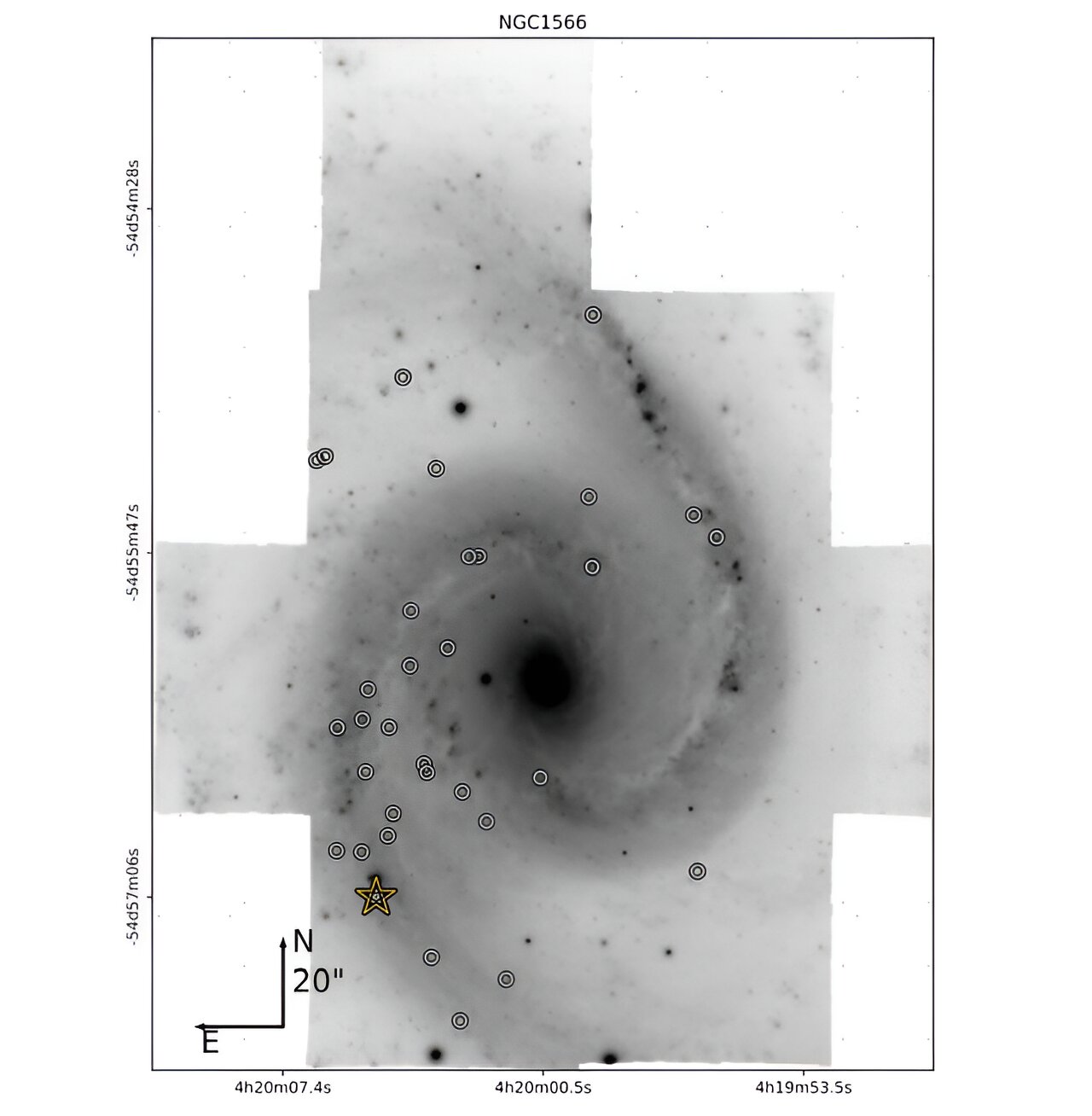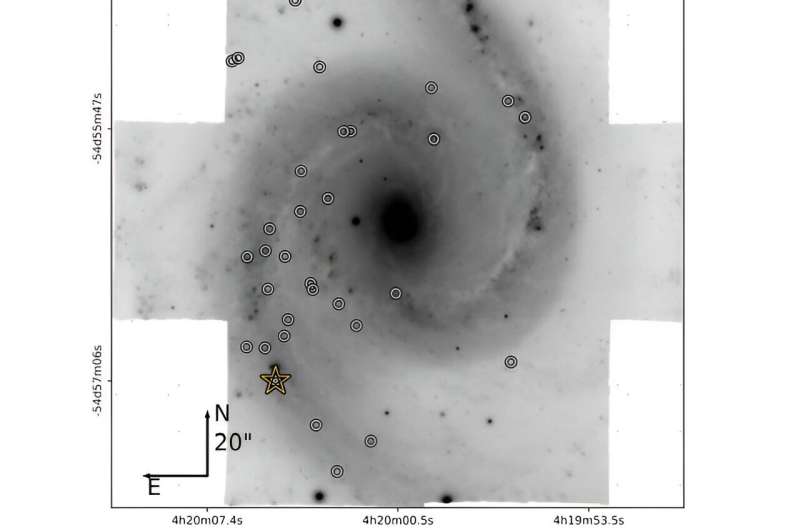

Using a new method exploiting the capabilities of the Multi Unit Spectroscopic Explorer (MUSE), astronomers have detected 307 new supernova remnants, including seven rare oxygen-rich ones. The finding was presented in a research paper published September 10 on the preprint server arXiv.
Supernova remnants (SNRs) are diffuse, expanding structures resulting from a supernova explosion. They contain ejected material expanding from the explosion and other interstellar material that has been swept up by the passage of the shockwave from the exploded star.
Some supernova remnants showcase strong visible light oxygen emission, and due to that, are known as oxygen-rich SNRs. However, oxygen-rich SNRs are rarely found, as to date, only eight such objects have been identified in our galaxy and in the Magellanic Clouds. Moreover, the nature of these SNRs and their connection to specific supernovae (SNe) is still not well understood.
Now, a team of astronomers led by Timo Kravtsov of the European Southern Observatory (ESO) in Chile reports new findings that could advance our knowledge about oxygen-rich supernova remnants. By employing a new method of SNR detection, they managed to discover hundreds of new remnants with MUSE mounted on ESO’s Very Large Telescope (VLT), including those exhibiting oxygen-emission.
“We present a new method to detect SNRs exploiting the capabilities of modern visible-light integral-field units based on the shapes of the SNR emission lines,” the researchers explained.
In their results, the team identified 307 supernova remnants across the galaxies in the PHANGS-MUSE survey, which is part of the Physics at High Angular Resolution in Nearby Galaxies (PHANGS) project. Out of this sample, they detected oxygen emission in 35 SNRs, and after further inspection, seven of them turned out to be oxygen-rich, as they exhibited unusually strong and broad oxygen lines.
According to the paper, most of the detected SNRs have counterparts in X-rays, which have luminosities within the range of 10–100 undecillion erg/s. The astronomers noted that this is near the limit of ultra-luminous X-ray (ULXs) sources and around the Eddington limit of neutron star mass objects.
Furthermore, due to similarity between discovered oxygen-rich SNRs and old supernovae/young SNRs, the researchers conducted a search for known SNe at the locations of SNRs in the sample. However, no such SNe have been found.
Summing up the results, the authors of the paper noted that their study further underlined the rarity of oxygen-rich supernova remnants. They plan to expand their new method to other nearby galaxies, hoping to detect more oxygen-rich SNRs, which could shed more light on the origin and properties of these remnants.
More information:
Timo Kravtsov et al, Discovery of young, oxygen-rich supernova remnants in PHANGS-MUSE galaxies, arXiv (2024). DOI: 10.48550/arxiv.2409.06504
Journal information:
arXiv
© 2024 Science X Network
Citation:
Astronomers detect hundreds of supernova remnants using novel method (2024, September 18)
retrieved 18 September 2024
from https://phys.org/news/2024-09-astronomers-hundreds-supernova-remnants-method.html
This document is subject to copyright. Apart from any fair dealing for the purpose of private study or research, no
part may be reproduced without the written permission. The content is provided for information purposes only.